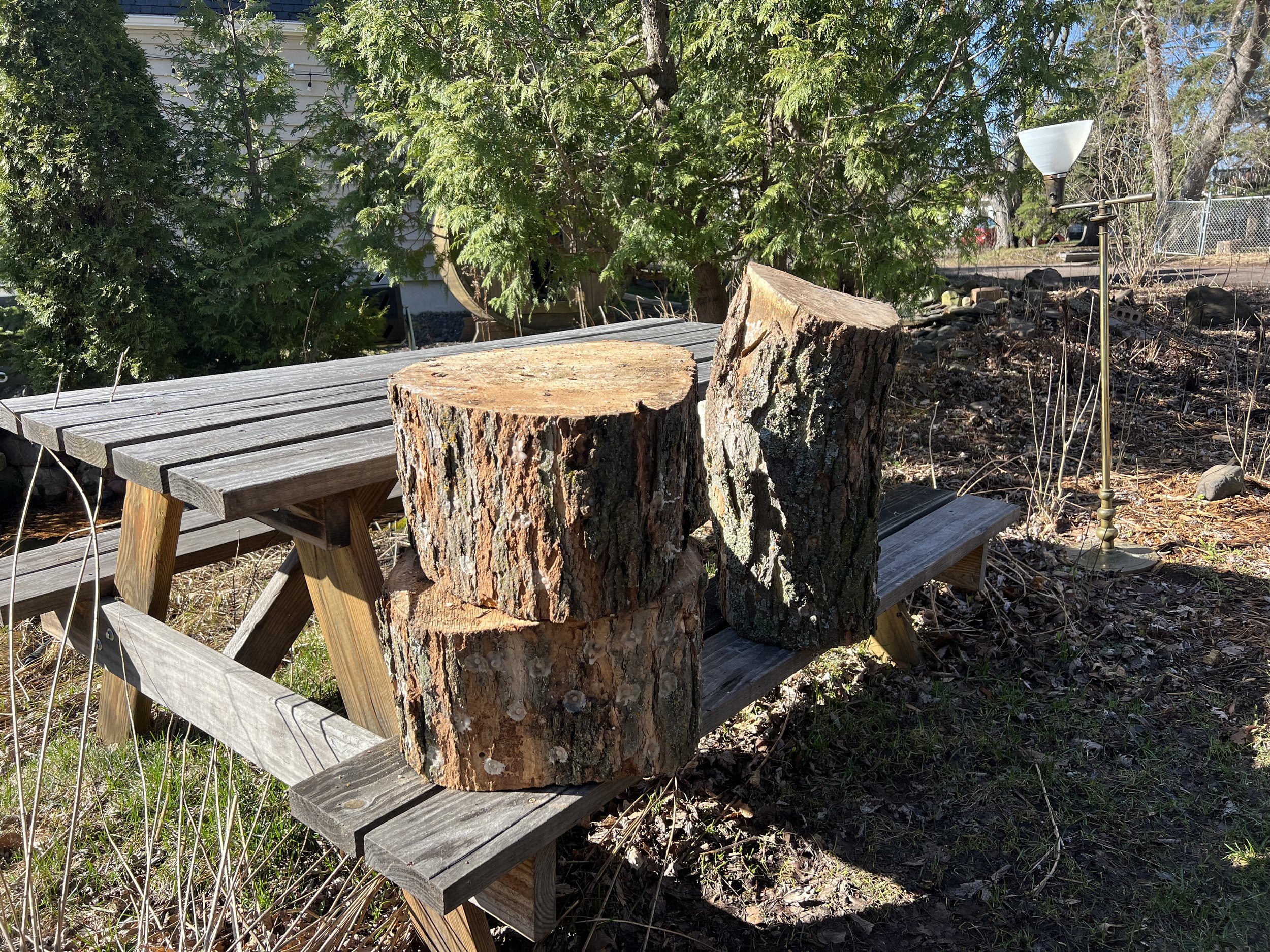April 2024
Hey folks, apologies for a very late April post. As I alluded to last month, I’ve been dealing with some mental and physical health issues and as such fell behind on this. Thank you so much to Tony Stein (shouted out at the end too, of course) for helping me get mushroom preparation done despite that so that I could build up momentum again. May’s post will be scheduled for the 17th!
It’s been a quieter month, in Duluth. A foot and a half of snow gave me time to take a step back to start planning for my plantings for the food forest, but the actual work was all in further mushroom propagation, and some unfortunate damage to my mushrooms towers.
Unfortunately I have learned that the very beautiful birds and rodents in the North Woods can sense the trace amounts of grain in the shiitake sawdust spawn and are happy to dig it out. I came out one day to find that many of my inoculated logs had been cleaned out.
After doing some research online the common solutions seemed to be to either wait it out and hope that the mycelium has time to colonize part of the log, or re-inoculate the logs using plug spawn. I’ve opted for the second path, because I really need to have some starting logs. Risking missing a whole year of mushroom production is a no-go.
However before re-inoculating those stacked logs, I hired a friend to help me with the remaining larger logs that the arborist delivered last fall. Those logs are quite sizeable, which made working with them by myself dangerous. It also meant that stacking them Jenga-style was a no go. So instead I opted for a style called the “Stump Technique” where the large logs are sliced to a manageable thickness around 4 to 10 inches depending on the diameter. We then drilled holes around the sides and used plug spawn (having learned the shortcomings of grain spawn) and then stacked the slabs to form a stump shape a couple of feet tall. In between each slab we layered some matching sawdust spawn and then the whole stump had a plastic bag placed over it to keep moisture in, and to maintain a protected environment while the logs get colonized by the mycelium.
You can see a few stumps assembled. Most are shiitakes, while the two on the bench are experimental chicken of the woods stumps. If those work well I will ramp up production dramatically.
I’ve begun working on my first rounds of coffee-grown blue oyster mushrooms. I’m using 5 gallon buckets filled with grounds, with little bits of blue oyster mushroom grain spawn sprinkled throughout. Coffee will be a new substrate (growing medium) for me, but it has some upsides that hopefully will bear fruit. It is a free waste product from coffee shops, so it’s a great way to get growing cheaply. It is also a substrate that is incredibly resistant to molds and other competing cultures. This means that it doesn’t need to be processed before inoculation, which saves a lot of time and reduces the risk of a bad batch. That said, what coffee grounds give in terms of cost efficiency and ease-of-use it takes in terms of yield. I expect between 1 and 2 flushes on average, and I don’t have a great measure of what the yield per pound grounds will be, but I suspect it will be lower than more nutritious substrates.
Calls to Action
The world of small farming runs on social media. While this isn’t my favorite place to be, it does allow for some great connections. With that said, the more folks who follow my various social media accounts the easier it'll be for me to get into some of these communities!
Living Proof can now be found on Facebook and Instagram. Please consider following! I’ll be posting these blog posts to the Facebook account, and sharing photos of the operation on Instagram going forward!
Thank Yous:
I’d like to thank the following folks for helping me with everything I mentioned in this post!
Tony and Bert at Social House for supplying me with coffee grounds
https://thesocialhousemn.com/
Matt Glesner at The Loch Café and Games for supplying me with coffee grounds
https://www.facebook.com/thelochcafeduluth/
Dom Dopico for helping me navigate the hoops and hurdles of creating my Facebook account
Tony Stein for prepping the mushroom stumps with me




